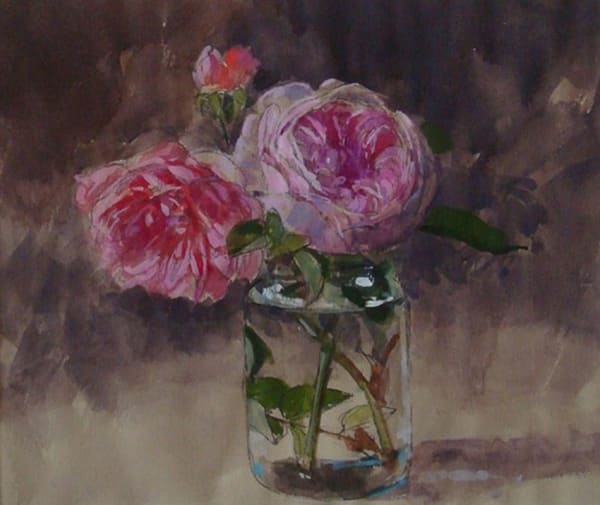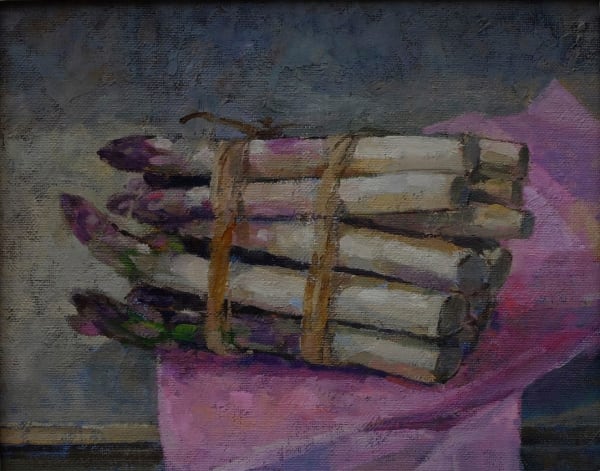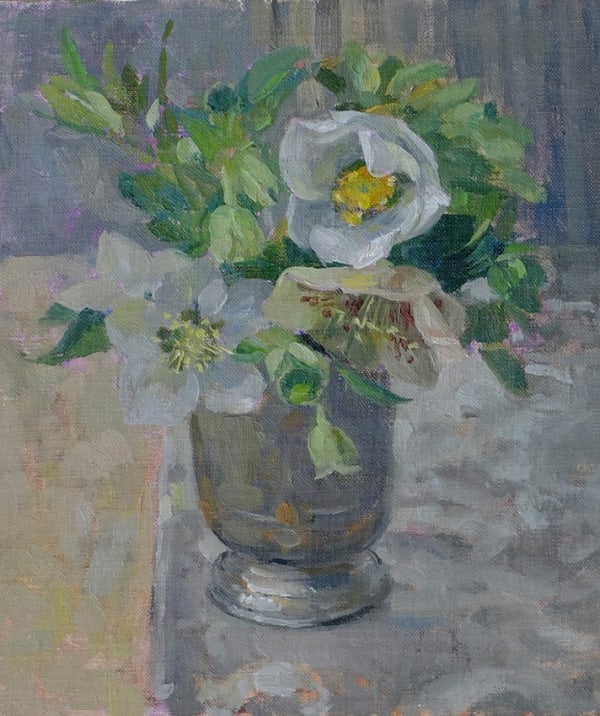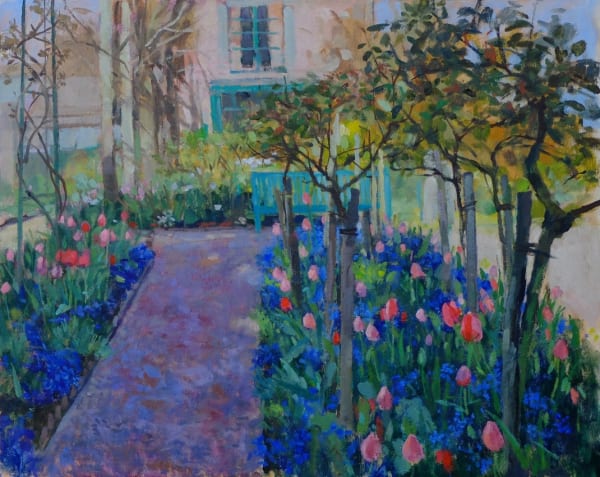Pamela Kay is one of Britain’s foremost painters of flowers and still life – working in watercolour and oils, and occasionally pastels. We persuaded Pam to put down her paintbrush for a moment to tell us about her work, experiences and influences . . .
“Although a student for seven years, firstly at Canterbury College of Art and then postgraduate at the Royal College of Art, my mentor and most influential teacher was the late John Ward, CBE, late RA, NEAC. John was an unsurpassed draughtsman, illustrator and a fine portrait painter and he employed me at weekends as his model.
The old atelier system of learning is an apprenticeship to a working, successful artist. It is the best way to find out exactly what is involved in earning a living as a painter and I was able to experience all this through him. One of his lasting pieces of advice (how I wish I had kept a diary!) was ‘Go to work like a milkman.’ And he did. You would begin work at nine in the morning and finish when the light went, or at six in the summer. None of this ‘waiting for inspiration to strike’ nonsense; he had a phone bill to pay.
Watching a portrait progress in the breaks between sittings was a profound education. I had been thoroughly taught the basics of my craft, but this was the rounded flesh on the bones. An influence as strong as this was difficult to shake off in order to find my own ‘handwriting’. I know many other students with the best teachers can have the same problem. I solved it by concentrating on a freelance textile designing career – something completely different.
My Principal at Canterbury would not allow me to take Fine Art as a solitary subject for my degree, as ‘no one ever earned a living from it’. My secondary craft was Textile Design and it did earn me a living, a travel scholarship, and a design award or two. At one point, I was offered the post of Head of the Design Production Department at John Lewis and turned it down. I realised that what I really wanted to do was paint. So I did.
My early experiences taught me how to learn from watching paintings and I soon found favourite painters to follow at the Royal Academy Summer Exhibitions. In fact, drawing and painting is a constant process of learning.There is more work done before the brush hits the canvas, than after. To enjoy and be completely absorbed in painting still life, which I am, you have to be totally taken by the life in inanimate objects - the most humble and overlooked. In fact, humility is the watchword. No ego, no celebrity seeking, no pushing and shoving. There are things far larger and more profound than us.
The obsessions and searching behind your chosen subject, enrich and define the work. For me, the immense stillness of a still life, whether by Chardin, Cotan, Coorte or Melendez is magical and all absorbing. And look at Bernard Dunstans’ work. No one understands a passage of paint as Dunstan does and there is immense scholarship behind his every stroke.
On a memorable visit to Ephesus in Turkey with my elder daughter, we were standing at the top end of the vast site looking at a neatly stacked pile of Roman terracotta water pipes. My daughter is a potter and began pointing out the details of these two thousand year old artefacts with a fascinating insight.
‘That one was thrown by an apprentice – it is uneven in its thickness; that one was thrown by an experienced thrower – it is perfect, the master; that was underfired; that too near the top of the kiln ...’ and so on. She could ‘read’ the back story that could be found in a heap of clay. The humble pile of terracotta conduits, overlooked by all who passed by, took on a vivid life of their own with an immediacy that gave the whole of that remarkable place a tangible vibrancy. St. Paul had only just left.
But now it’s time for my ‘milkround’ to begin and I have work to do for the next exhibition.”
© Pamela Kay 2016
To find out more, and to view artwork available to purchase, view our artist profile page for Pamela Kay.




